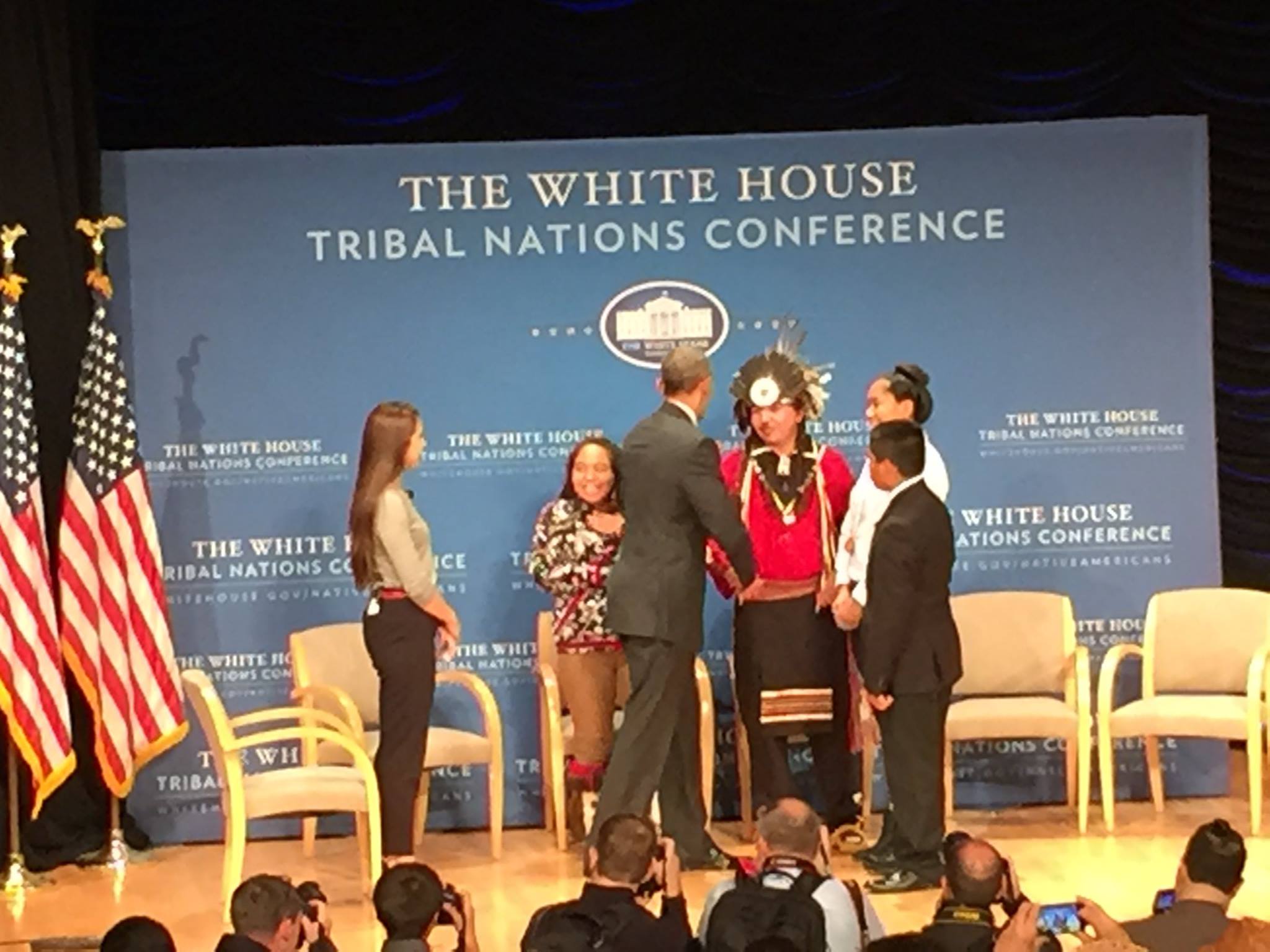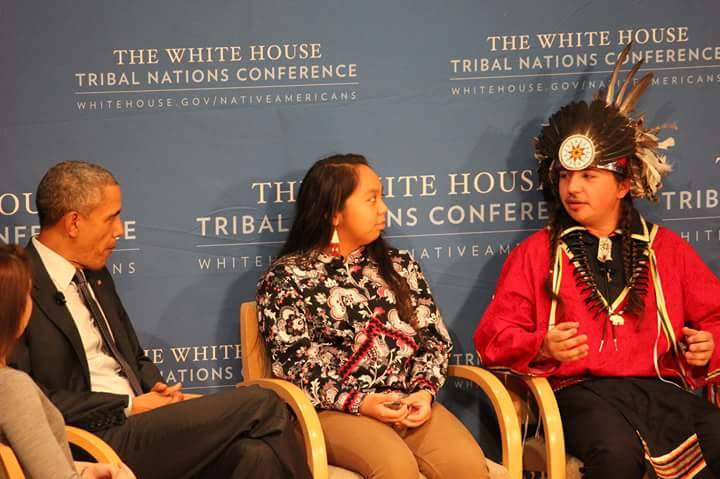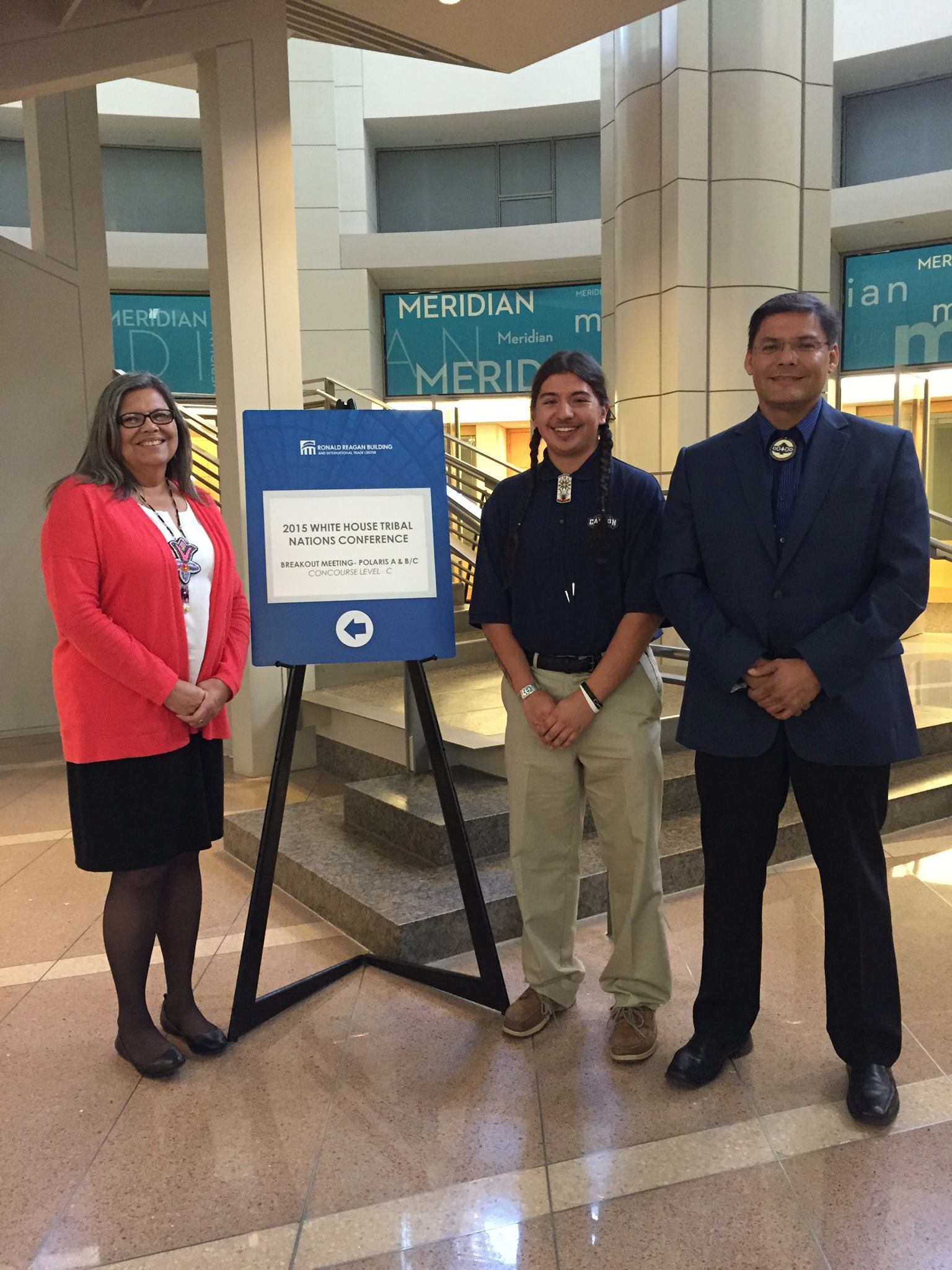
Brayden ‘Sonny’ White sat on stage in the Ronald Reagan Building and International Trade Center in Washington DC waiting on the President of the Unites States. Reciting his introduction speech and questions in his head – he was nervous that he was going to stutter.
White, along with three other indigenous youth, were selected to be on a youth panel with U.S. President Barack Obama, where much of the questions and discussion were on youth, education, and the astonishing number of suicides on Native territories.
This panel discussion was part of the seventh annual Tribal Nations Conference, where the main focus was on Obama’s Generation Indigenous, or Gen-I, program, which he launched in 2014 at the White House Tribal Nations Gathering. This came on the heels of a trip Obama took to the Standing Rock Sioux Tribal Nation. Obama later discussed in the media that the trip brought him to tears. The U.S. President said he was shaken, “some of these kids were carrying burdens no young person should ever have to carry. And it was heartbreaking,†said Obama to the American press.
First Nation leaders from across the country met at the White house on November 4th, 2015. It was an event that began with traditional Native American songs, a traditional flag ceremony, and a speech by the President. Speeches were also given from Interior Secretary Sally Jewell and White House Senior Adviser Valerie Jarrett.
Akwesasne TV’s Executive Producer, Regan Jacobs reached out to Brayden White via social media to conduct a Q&A with him on his experience and journey to the White House, and to get his thoughts on sharing a stage with the President of the United States.
Q. Can you tell me about your experience in Washington DC?
A. Well let me start it off like this. My name is Brayden White, 21, Bear Clan and a member of the St. Regis Mohawk Nation at Akwesasne. I’m a Gen-I National Native Youth Network Ambassador. I was emailed about this upcoming conference happening on November 4th and 5th. I applied and was selected to attend. After arriving and meeting my fellow ambassadors, I was informed later that night that there was talk of me possibly being on a panel to interview the President. I was open to this, and to my delight, I was selected by the White House to be one of the four youths on the panel. I prepared questions and than started the preparation that would come with meeting the President. After getting cleared through security, the magnitude of this event set in and the anxiety started. When I first met him and shook his hand, it really sank in. As we began our questions, the anxiety began again. The President saw the nervousness and made the situation calmer by making a joke. He is the first President to have an interest in Native American issues, and I think this makes him an incredible President.
 Q. That’s amazing! How does it feel to be selected as a youth ambassador?
A. Amazing. I love being able to give our youth a voice in the world.
Q. What was it like meeting the President of the United States?
A. He was so relaxed right from the start, he broke the ice with jokes and it definitely calmed our youth panel down. It was unreal to meet him and talk. Later the panelists described it as being ‘like a dream’. Who would’ve thought that four youth, coming from diverse regions and backgrounds, would be selected to speak with the U.S. President?!’
Q. What did you talk with him about?
A. Higher Education for low income students.
 Q. What do you feel are the issues indigenous youth are facing today?
A. Poverty, higher education, diabetes, suicide, racism & many more.
Q. When or where did you first hear about Gen I ambassadors?
A. In July 2015, during the White House Tribal Youth Gathering in Washington DC.
Q. Nia:wen, in closing, what would be the one thing you’d like the general public to know about indigenous people?
A. Just a word to the youth: I know it may sound cliché but anything is possible, don’t let anyone tell you that you can’t achieve greatness.
Q. Thank you for your time. And if you don’t mind, can you describe what it was like sitting up on that stage? Was the room big? Lots of people watching?
A. The room was an amphitheater and all the seats were filled. I felt nervous but when I started speaking and letting my ideas be heard, I felt comfortable and at ease.
Q. Do you plan on continuing on in this type of ‘ambassadorship’?
A. I’ll always be working towards a better future for our next 7 Generations, because that’s what they deserve”
Q. Is there anything else you’d like to add?

A. In July I attended the White House Tribal Youth Gathering, which featured Michelle Obama as the keynote speaker. After her speech, I briefly spoke with her while she was shaking hands in the crowd. I thanked her for starting this Gen-I Initiative for Native American Youth. Then when I was flying down to Washington this past week, I ran into Bernie Sanders and I briefly got to talk to him about the presidential campaign and he won me over when he boarded my plane and sat in coach, even though he easily could’ve opted up to First Class. My journey was chronicled by MTV and I was interviewed by them as well.
White asked the president how the Obama Administration could empower Native youth hoping to go to college. Obama responded in part. “We need to do a better job of telling you what is there.” The president also addressed the issue about the importance of holding onto culture.

Saint Regis Mohawk Tribal Chiefs Beverly Cook and Eric Thompson also attended the conference and here’s what they had to say.
“Attending the White House Tribal Nations Conference gave us, Chief Thompson and I, the opportunity to meet with cabinet secretaries and congressmen and women who are supportive of our work with border issues, environmental concerns, violence against women and children and youth. Tribal council takes every opportunity to support our children and youth in all aspects of their lives, at home, in school, and out in the world. Seeing Sonny carry himself with such poise was a joy for us, and is a reassurance that we’ll be in good hands when our youth are called upon to lead, said Chief Beverly Cook.
SRMT Chief Eric Thompson says Mohawk representation at events such as these are important. “Raising issues with regard to the environment, health, border crossing and education and laying the groundwork to address these issues on the federal level is fundamental and necessary. Having our youth represented at this conference, by Sonny, in such a fashion, has filled us with pride and, echoing chief Cook’s remarks, reassures us that the youth will be ready, willing and able when called upon to lead in the future.”
President Obama is being hailed as a U.S. president who has taken the most interest in Native American issues. In a speech at the conference, Obama also praised the resilience of Native American students who face high rates of suicide, poverty and dropping out of high school, and emphasized his commitment to their success.
“When we talk about the future of Indian country, we’re really talking about the future of young people. I don’t need to tell you the enormous challenges they face,” he said. “A lot of the young people I’ve met have gone through a lot more than anybody should have to go through during a lifetime at a very early age.”
“But for all our young people have endured, the young people I’ve met have also given me incredible hope,” he added. “I see so much promise in them, so much determination.”
The three other native youth delegates were Tatiana Ticknor(16 – Yup’ik/Tlingit/Dena’ina) Blossom Johnson (23 – Navajo Nation) and Philip Douglas (15 – Seminole Nation of Oklahoma).
White says he had to find local sponsors to help make his participation as an ambassador possible. From within Akwesasne, the Saint Regis Mohawk Tribe, Tarbell Management Group, ADCS(Scott McDonald) and the Hart family donated funds and resources.
Sources: Brayden Sonny White
American Journal/Associated Press/American Press
By: Regan Jacobs, Akwesasne TV


